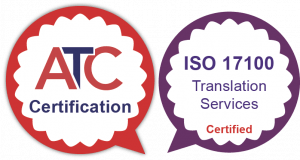Having spent a large part of my professional—and who’s kidding who, personal waking hours—pondering, researching, teaching, and applying emotional intelligence-building techniques, I landed on the notion that self-awareness is the cornerstone of emotional intelligence. As such, in my courses and assessments, I spend a disproportionate time helping others strengthen their self-awareness first—their ability to see themselves more clearly and objectively through reflection and introspection—before delving into the other emotional intelligence domains. I am not alone in having this notion as many of today’s most well-known practitioners in applying emotional intelligence in the workplace, Travis Bradberry, Daniel Goleman, among others, speak to the crucial nature of self-awareness and its significant impact on the other domains of emotional intelligence. (In Goleman’s popular four-domain model, in addition to self-awareness, the other three domains include self-management, social awareness, and relationship management.)
Here’s a challenge though. In the business world, while there are numerous assessments to help us better understand and develop our emotional intelligence, the number of assessments to understand and develop our self-awareness, per se, is not nearly as voluminous. It’s not easy to develop self-awareness in those who are not self-aware or low on the self-awareness scale. The saying, “You don’t know what you don’t know” applies and it can be most difficult to train someone to see what they cannot see for themselves.
Add to that the harsh, cruel reality that self-awareness as a training topic, has historically been viewed in corporate circles as too “touchy feely” and not adequately substantiated as an attribute that produces sustainable bottom-line results. Helping others to “get to know themselves” as a means to improve business performance can be messy because it’s complex and each individual’s experiences, knowledge, skills and attitudes factor into the equation. However, as emotional intelligence skill development continues to attract some well-deserved attention in businesses around the world, perhaps it’s time we look at it more closely, specifically in how we assess it—starting with self-awareness.
Time to Dig Deeper
Let’s say we buy into the idea that self-awareness is the cornerstone of emotional intelligence. If we were building a skyscraper (which is an apt analogy for emotional intelligence), we wouldn’t start at the top, would we?
Now, let’s take it a step further and ask then, what’s the cornerstone of self-awareness? What needs to be developed within ourselves to be more self-aware? Or, posed in another way, what gets in the way of us becoming more self-aware?
As a senior executive managing teams in financial services, learning, and healthcare organizations, as well as working with other executives in my private coaching practice, I found that those who lacked the self-awareness necessary to see how their behaviors or inappropriate emotional responses were getting in their way at work, had certain unmet emotional needs. The unmet emotional needs were driving their low emotional intelligence behaviors. In my professional opinion, the cornerstone of self-awareness is understanding and doing something constructive about your emotional needs. Yes, your emotional needs.
When you read those two words—emotional needs—did you feel a reaction to them? What type of reaction was it?
It’s important that you check in with yourself when you hear the words “emotional needs,” because many of us were taught or conditioned by well-intentioned (and sometimes not-so-well-intentioned) people that having emotional needs is bad. Very bad. Some of us may have been taught that being emotional or having emotional needs is not a sign of strength, but a sign of weakness.
That belief, that emotions equal weakness, will keep you from excelling at work, enjoying life, and evolving as a soul. Emotions are meant to be experienced by human beings. That’s the point of our existence to a large, and I mean very large, degree. Emotions are the centerpiece of life.
But emotion without logic can trip us up. We need to use logic to SHAPE emotions for best results. A person who acts or makes decisions only based on their emotions without logic or considering the impact of their actions runs the risk of not being pleased with their results.
Ultimately, we must learn how to use our logic to get needs met in a way that feels good to us (without unnecessarily or negatively impacting others). When you use logic to shape your emotions in a positive way your business results improve. Assessments help us exercise logic.
Assessing Emotional Needs in the Workplace
Sadly, in the world of business I have come across few assessments that help identify emotional needs. This, I believe is in part because of the stigma we associate with having emotional needs in the first place. And, while some businesses skirt around the fringes of emotional needs, any assessments and training, if offered, is often done under the umbrella of mental health—which is still woefully misunderstood and not consistently addressed in the workplace.
To fill the gap, I created a self-assessment to help team members get to the bottom of their unmet needs, ultimately to help them achieve their career goals while optimizing their performance and results. This self-assessment was not scientifically validated but was effective all the same, which I’ll expand upon in the next sections.
The self-assessment featured forty-four emotional needs—emotional needs such as “to feel acknowledged,” “to feel a calling,” “to feel challenged,” “to feel connected,” “to feel heard,” “to feel orderly,” “to feel respected,” as well as 37 others. For each emotional need, individuals would read the description of the need presented and then ask themselves “How important is this need to me?” As is the case with other assessments of this nature, they were asked to quickly go with their gut response, circling the number on the continuum that best represented how they felt about the need.
Let me provide a couple illustrations. I was working in an organizational development capacity with a group of frontline managers. In my pre-training consultation work, one of the managers (Manager A) was characterized by several of her colleagues as being a “perfectionist” that was “hard to please.” She was constantly giving unsolicited advice on a wide range of topics, business- and non-business related, and the end result was that team members were growing weary of her “shoulding” on everyone—“You should not start your email like this,” “You should not eat foods that make you sleepy,” “You should only address customers using this greeting.” Unfortunately, even though Manager A was a top performer, her team members were leaving the company at an alarming rate.
Another manager (Manager B) was treating his colleagues with disrespect, belittling their contributions, and growing increasingly frustrated by having to “work with people who didn’t get it.” His behaviors were certainly getting attention, just not the type he desired. Compounding the situation, his senior manager had the added responsibility of managing a growing number of team members who didn’t want to work with Manager B.
Both managers took the emotional needs self-assessment as part of their preparation for participating in an emotional intelligence leadership program facilitated in four, one-hour virtual sessions. During the virtual sessions they worked on group exercises to understand their top emotional needs (in addition to working through other exercises to strengthen their emotional intelligence). The company also offered one-on-one coaching sessions to managers over the course of the program to provide managers additional support as they worked through the many discoveries prompted by the self-assessment exercises.
Filling Emotional Needs
After taking the emotional needs self-assessment and participating in the training, Manager A uncovered three top emotional needs. She selected her emotional need to “be heard” as a focus for a series of individual and group activities to uncover five simple action steps she could take to help fill her emotional need on her own. She mobilized one of the steps—create a description for a healthy eating class she could teach at the local community college. (She held a certification as a holistic health counselor and was always telling people at work what they should do to be healthy.) The college loved the proposed course and hired her as an adjunct faculty member. Teaching the class helped fill her need to “be heard” by those who were open to what she had to share and, with the need met, her colleagues found her easier to work with on the job.
Manager B did the same series of exercises. The emotional need he worked on was “to feel challenged.” After working on the group exercises and participating in a one-on-one coaching session, Manager B decided to check out an improvisational comedy class. (This was something that always interested him, but he had been terrified of trying.) After he started the class, his co-workers noticed his behavior at work changed for the better …and almost immediately.
In both cases, the on-the-job “fix” was an “after work hours” activity. Once again supporting the rationale that effective performance improvement solutions often offer a more holistic approach to behavioral change.
One Last Thought
We all have emotional needs. It’s what makes us human. When you can name, understand, and describe your top emotional needs, it’s like being able to speak a foreign language fluently and with great comfort and confidence. When you can speak the language of your own emotions, you’re in a better position to use that information to take purposeful action that’s in alignment with your greatest desires.
But there’s another benefit as well when you work with your top emotional needs—doing so can have a direct and positive impact on your self-awareness and emotional intelligence at work… and beyond.
As learning practitioners, it’s up to us to help team members identify their top emotional needs AND we must provide a safe place to discuss these needs and do the work necessary to get needs met. From a business perspective, we need to be willing to support employees in this very meaningful, albeit a bit messy, way if we are to cultivate real performance improvement driven by emotional intelligence practices. It’s time for employee assessments to get even more personal and practical.
About the Author
Cheryl O’Donoghue, MS is an author, Founder and CEO at Emotional Intelligence Leadership Resources, and Co-founder at the 501(c)(3) nonprofit Mission Sisters Who Work.
Over the past thirty years, Cheryl has held senior executive roles in financial services, corporate education, nonprofit, and healthcare organizations where she’s been responsible for leading company-wide communications and training initiatives. Many of these were designed to help large populations of people (both customers and employees) adopt dramatically new operating models and technology-enabled solutions. In 2016, she left her position as Chief Communications Officer for a health care company in the Chicagoland area to write books showcasing women’s achievements in business, with a spotlight on emotionally intelligent leaders. How to Be a Woman in Business was published in 2018; How to Be a Woman in Technology was released in 2019; and Cheryl’s newest book How to Be an Emotionally Intelligent Leader was published earlier this year.
In 2016, Cheryl also started her own communications and training company—Emotional Intelligence Leadership Resources (BnEiLeader.com)—and works with executives to transform their organizations and the results they achieve through proven emotional intelligence leadership practices. Additionally, in 2018 she co-founded the 501(c)(3) nonprofit Mission Sisters Who Work (missionsisterswhowork.org). Mission Sisters provides self-empowerment and emotional intelligence books and training to all women, as well as scholarships to women with limited access to funding who are interested in business and STEM-related careers.
Chery’ls love affair with emotional intelligence leadership began in graduate school when she did her masters project on emotional intelligence and how the purposeful development of it in the workplace significantly contributes to the health and prosperity of organizations and the people in those organizations. Then in the late 1990s working as a senior executive for a global learning and consulting company, she received her first company-sponsored coaching certification. (She currently holds four, each of which are focused on applying widely accepted emotional intelligence boosting principles and practices.)
In the 2000s she was hired by Harper College in the Chicagoland area to create and facilitate courses to develop emotional intelligence in both adults and youth. In the 2010s, as part of her responsibility as Chief Communications Officer for VNA Healthcare, she led an organizational development effort to strengthen staff efficiency, effectiveness, and engagement through signature strengths and emotional intelligence leadership training. Within eighteen months of program rollout the company was awarded a Best Places to Work in Illinois designation. The award was based on an independent study of best practices and employee satisfaction. Employees commended the company for the personal and professional development training they received, indicating it was a primary factor for giving their employer a high rating.
Philanthropy has played a prominent role throughout Cheryl’s life. One hundred percent of the royalties earned from her book sales go to women served by Mission Sisters Who Work, in addition to a portion of all earnings from her work through Emotional Intelligence Leadership Resources.
To learn more about Cheryl’s work, visit BnEiLeader.com or cherylodonoghue.com. She can also be contacted on LinkedIn (Cheryl O’Donoghue, MS) or at cheryl@cherylodonoghue.com.




